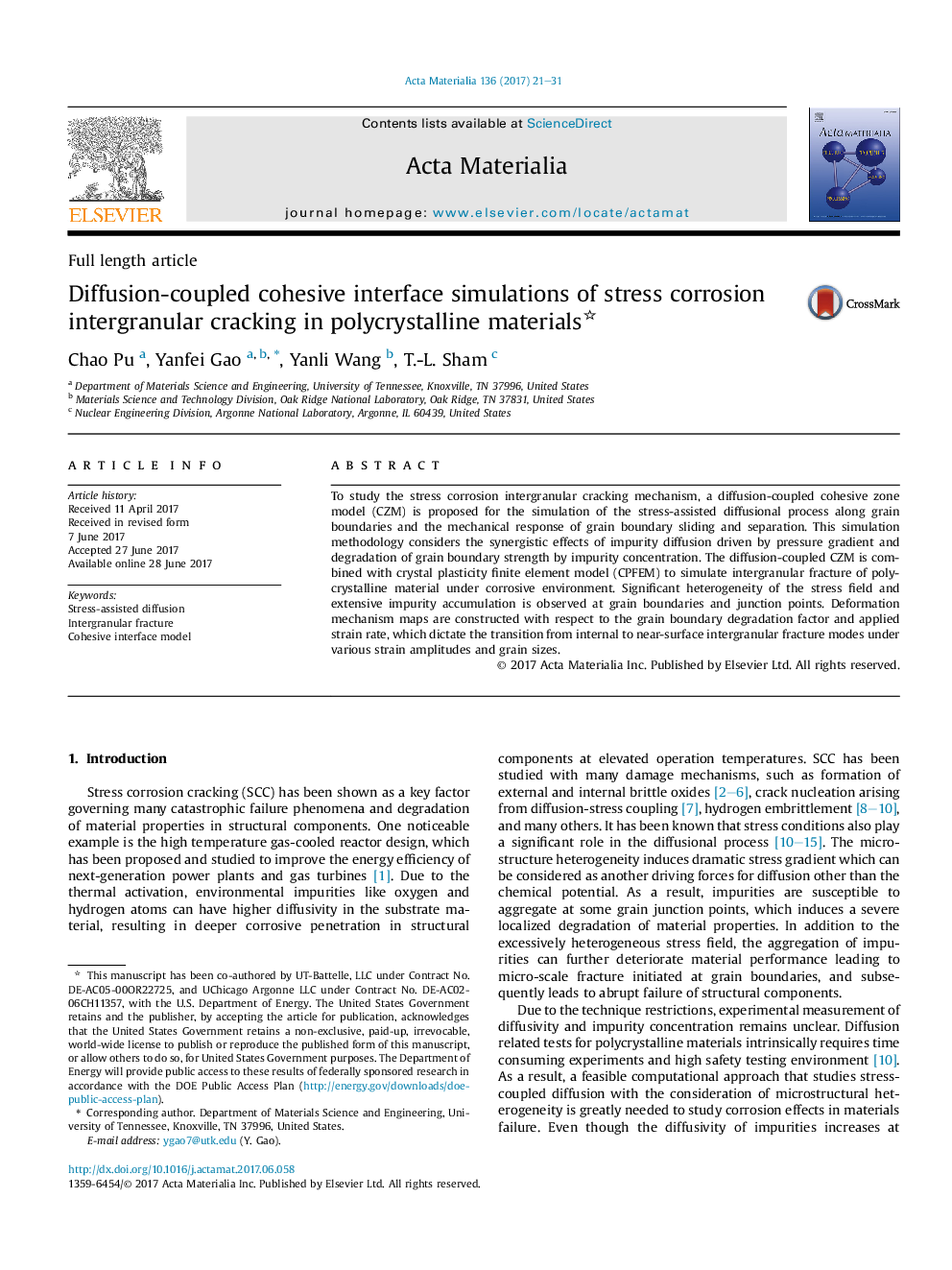| Article ID | Journal | Published Year | Pages | File Type |
|---|---|---|---|---|
| 5436098 | Acta Materialia | 2017 | 11 Pages |
â¢A diffusion-coupled cohesive interface model was developed for stress corrosion intergranular cracks.â¢Structural and stress inhomogeneities lead to near-surface crack or internal crack.â¢Failure mechanism maps were constructed with respect to loading rate and damage factor.
To study the stress corrosion intergranular cracking mechanism, a diffusion-coupled cohesive zone model (CZM) is proposed for the simulation of the stress-assisted diffusional process along grain boundaries and the mechanical response of grain boundary sliding and separation. This simulation methodology considers the synergistic effects of impurity diffusion driven by pressure gradient and degradation of grain boundary strength by impurity concentration. The diffusion-coupled CZM is combined with crystal plasticity finite element model (CPFEM) to simulate intergranular fracture of polycrystalline material under corrosive environment. Significant heterogeneity of the stress field and extensive impurity accumulation is observed at grain boundaries and junction points. Deformation mechanism maps are constructed with respect to the grain boundary degradation factor and applied strain rate, which dictate the transition from internal to near-surface intergranular fracture modes under various strain amplitudes and grain sizes.
Graphical abstractDownload high-res image (369KB)Download full-size image
